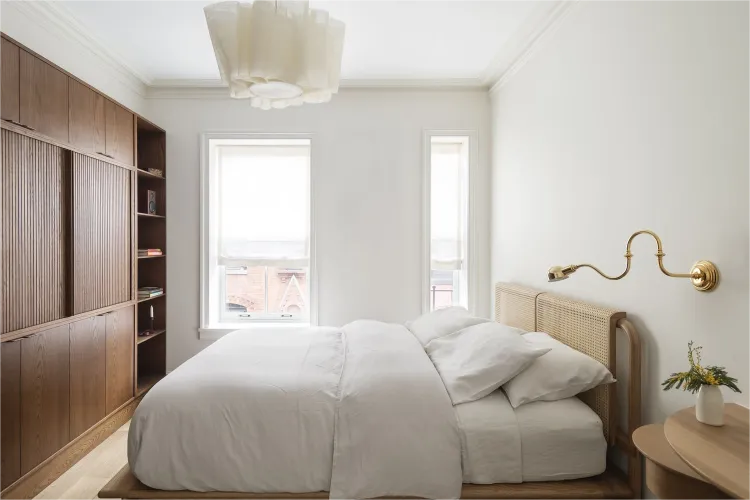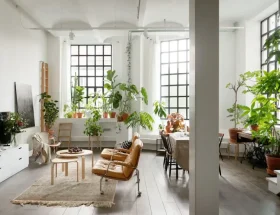
Mastering the mix: how to mix and match wood furniture in your bedroom
Wood furniture brings warmth, character, and natural beauty to any bedroom, but mixing and matching different wood tones can be a daunting task. However, when done thoughtfully, mixing wood furniture can create a layered and visually interesting space that feels curated and cohesive. Whether you’re working with existing pieces or starting from scratch, mastering the art of mixing wood furniture in your bedroom can elevate the design and create a personalised sanctuary. In this article, we’ll explore some essential tips and strategies for mixing and matching wood furniture in your bedroom to create a harmonious and stylish space.
Identify Your Dominant Wood Tone:
Before you start mixing and matching wood furniture, it’s essential to identify the dominant wood tone in your bedroom. This will serve as the anchor for your design and help guide your decisions when selecting complementary pieces. Look at the largest or most prominent wood piece in the room, such as the bed frame, dresser, or wardrobe, and determine its primary wood tone – whether it’s light oak, rich walnut, or warm cherry. This dominant wood tone will set the tone for the rest of your furniture selections and provide a cohesive foundation for your design.
Create Contrast with Different Wood Tones:
Once you’ve identified your dominant wood tone, look for complementary wood tones that create contrast and visual interest in the space. Mixing different wood tones adds depth and dimension to your bedroom decor, preventing it from feeling flat or monotonous. Experiment with pairing light woods with dark woods or warm tones with cool tones to create a dynamic and balanced look. For example, if you have a dark walnut bed frame, consider pairing it with a lighter oak bedside table or dresser to create contrast and balance in the room.
Find a Unifying Element:
While mixing different wood tones can create a visually appealing contrast, it’s essential to find a unifying element that ties everything together. This could be a shared design feature, such as a similar grain pattern, finish, or style, that helps create a cohesive and harmonious look. Look for commonalities between your wood furniture pieces, such as similar hardware, leg styles, or decorative details, and use them to create a sense of unity and cohesion in the room. This unifying element will help create a cohesive and harmonious look that feels intentional and thoughtfully curated.
Layer in Texture and Colour:
In addition to mixing different wood tones, consider layering in texture and colour to add depth and visual interest to your bedroom decor. Incorporate textiles like bedding, rugs, and curtains in complementary colours and patterns to soften the look of the wood furniture and create a cozy and inviting atmosphere. Add decorative accents like throws, pillows, and artwork in different textures and materials to create visual contrast and add personality to the space. By combining different textures and colours, you can create a layered and dynamic bedroom design that feels both stylish and inviting.
Use Neutrals as a Balancing Element:
Neutrals are a versatile and timeless choice for balancing different wood tones in your bedroom decor. Consider incorporating neutral colours like white, cream, grey, or beige as a backdrop for your wood furniture to create a sense of balance and harmony in the space. Paint the walls a neutral colour to allow your wood furniture to take centre stage and become the focal point of the room. Use neutral bedding, curtains, and accessories to create a cohesive and balanced look that allows the beauty of the wood furniture to shine.
Mix and Match Styles for Eclectic Charm:
Don’t be afraid to mix and match different furniture styles to create an eclectic and personalised bedroom design. Combining traditional and modern elements adds visual interest and personality to the space, creating a dynamic and layered look that feels curated and unique. Pair a sleek and contemporary platform bed with a vintage-inspired bedside table for a mix of old and new. Or, combine rustic wooden furniture with industrial accents for a modern farmhouse vibe. Mixing different styles adds character and charm to your bedroom decor, making it feel like a true reflection of your personal taste and style.
Pay Attention to Scale and Proportion:
When mixing and matching wood furniture, it’s essential to pay attention to scale and proportion to ensure a balanced and harmonious look. Avoid overcrowding the room with too many large furniture pieces or overwhelming the space with pieces that are too small. Instead, aim for a balanced mix of furniture sizes and shapes that complement each other and create a sense of visual harmony. Place a bedside table on either side of the bed to provide symmetry and balance while also offering convenient storage and surface space for lamps and accessories.
Conclusion:
Mixing and matching wood furniture in your bedroom is a great way to create a personalised and stylish space that reflects your unique taste and personality. By identifying your dominant wood tone, creating contrast with different wood tones, finding a unifying element, layering in texture and colour, using neutrals as a balancing element, mixing and matching styles for eclectic charm, and paying attention to scale and proportion, you can achieve a harmonious and cohesive bedroom design that feels both cohesive and curated. So take the time to experiment with different wood furniture combinations and create a bedroom that feels like a true reflection of you.









